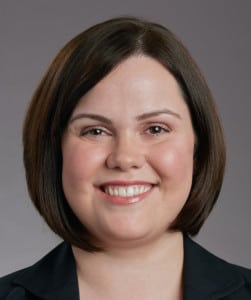
Ask just about any marketer if an integrated strategy is important, and you probably will get a yes. Ask if his or her marketing effort is integrated, and you’ll probably get a no.
Some 70% of marketers told an Altimeter poll that they lack an integrated content strategy. Yet integrated marketing is such a hot topic it was the subject of a 60-page report from The Conference Board that was recently shared with PR News Pro readers (PRNP, Sept. 26). If everyone values the importance of integration, why are so few brands actually doing it? An article in PR News listed a host of reasons (PRN, Oct. 26, 2015).
I’ll be succinct. Because integration is hard, that’s why.
Hard, but not impossible.
Toshiba America Medical Systems, Inc. (TAMS) struggled with ensuring integration. As I’m certain you know, in a fast-paced environment it’s very easy to get caught up in your projects and fail to consider integration, or much of anything besides your immediate team.

Over the past five years TAMS has implemented processes that have helped—dare I say forced—its marketing organization to integrate.
Here’s how:
Input Sessions 2.0
TAMS breaks marketing into two categories: four business units with roughly 10-15 people in each; and one corporate communications group of about 20 people [see chart below]. The business units work directly with the parent company in Japan to bring products to market. Corporate communications develops strategies and executes tactics on behalf of the business units.
In the past, it was not uncommon for subgroups of the corporate communications team to work in silos. For example, PR, brochures, social media and digital all had separate input sessions with the business units for their respective projects. As a result, key messages were not consistent across much of our communication. In addition, it took a lot of extra time and effort to fix things at the last minute. It was often the key message.
For example, PR would meet with the business unit (BU) and BU would say the most important thing to focus on was X. Then, at a meeting two weeks later with advertising, something changed or the advertising team would ask something new and the BU would say, “Great point—yes, that’s most important.” So, communication materials were not aligning and supporting the key message, which was not only confusing, but also did a disservice to our brand and products.
Today, when TAMS is launching a product or program, it convenes one input session with all internal and external teams; everyone at the session receives the same information simultaneously and agrees on a single-minded idea. Together.
This input session involves the business unit director and managers, all of corporate communications, plus any key partners, such as PR and advertising agencies.
You may be thinking, “that’s one big meeting. Isn’t it overkill?” It’s not. Beyond ensuring that everyone is working off of one key message, it saves so much time, and our business units really appreciate it. While overwhelming to them at first, they now see the benefits of having one large meeting rather than multiple small ones.
How One Brand Integrates Communications and Business Units

Source: Toshiba America Medical Systems and PR News Pro
Meetings with all Stakeholders Present
With so many projects going on at once, we realized that we weren’t leveraging the work of our separate teams. About five years ago, we started to hold regular bi-weekly meetings with each business unit. We have a running project list for each, and at the meetings we go through every project and update the status or ask for resources or information.
It seems like a simple thing to do, but the results have been game changing. For example, now everyone on the team knows what press releases are on the calendar, which means social media knows that it has to plan posts, the digital team knows that the website needs to be done by a certain date and the collateral team has a brochure ready to go.
These two simple processes have made a world of difference for us as a marketing organization. Now, we are all working from the same message, with the same set of information and working together to time delivery of communications to have maximum impact.
This content appeared originally in PR News Pro, October, 31, 2016. For subscription information, please visit: https://www.prnewsonline.com/about/info
CONTACT: [email protected]
